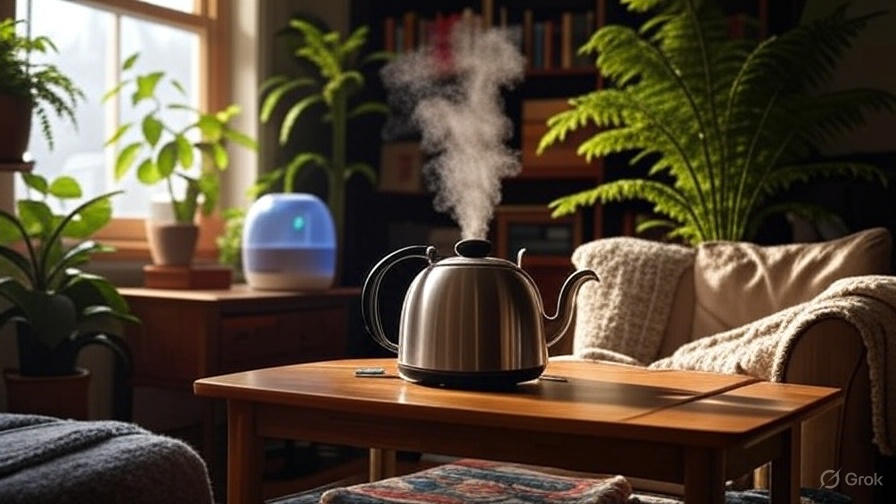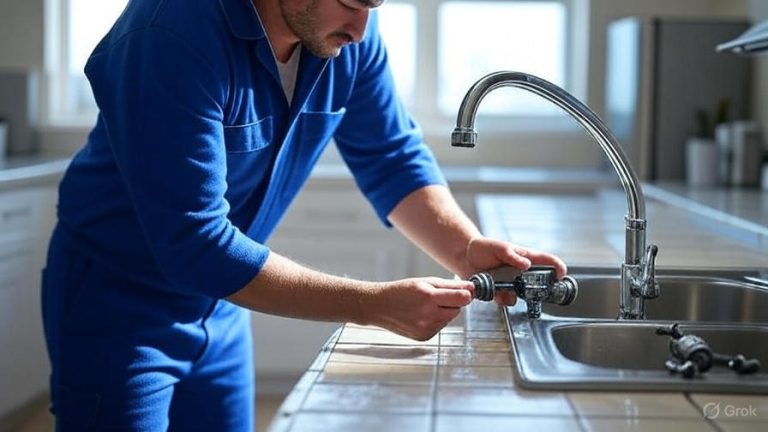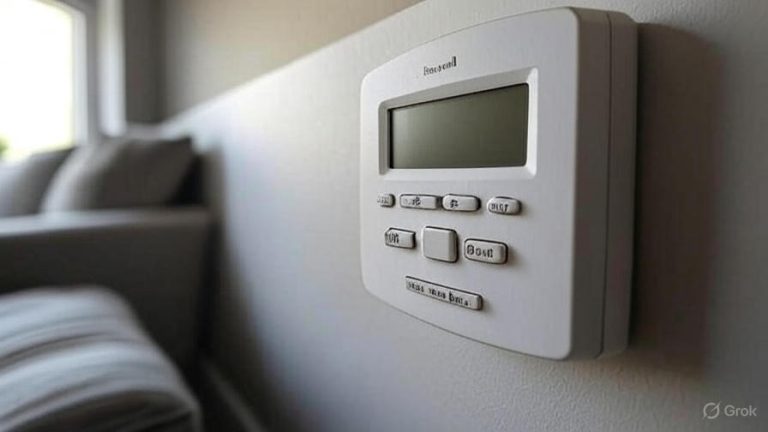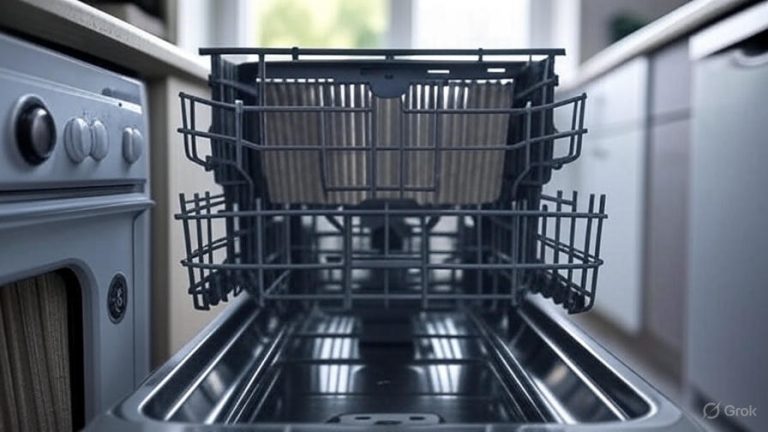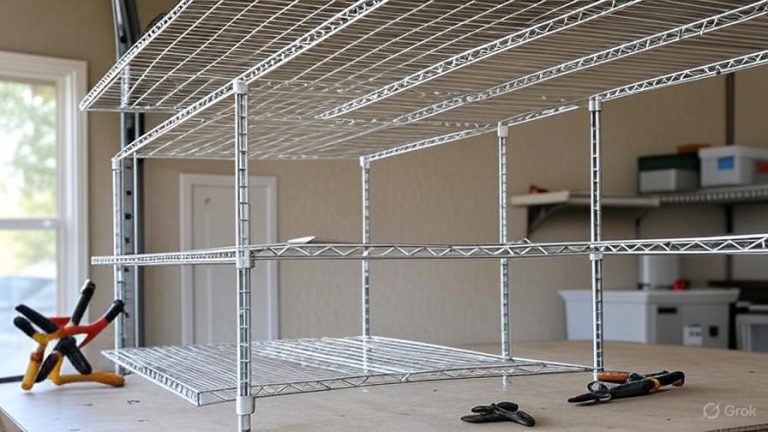How to Raise Humidity in Your House?
Dry air in your home can wreak havoc on your comfort, health, and even your furniture. When humidity levels drop below 30%, you might notice static electricity, cracked lips, irritated skin, and respiratory discomfort. The good news is that you can easily increase indoor humidity using proven methods that won’t break the bank.
Why Indoor Humidity Matters for Your Health and Home
Low humidity creates multiple problems that affect both your well-being and your living space. Your skin loses moisture rapidly in dry conditions, leading to itchiness, flaking, and premature aging. Your respiratory system also suffers as dry air irritates nasal passages and throat tissues, making you more susceptible to infections and allergies.
Wooden furniture and flooring face serious damage when air moisture drops too low. Wood contracts and splits, creating gaps in hardwood floors and cracks in antique furniture. Musical instruments lose their tune as wood components shrink, while houseplants struggle to thrive in overly dry conditions.
Static electricity becomes a constant annoyance when humidity falls below optimal levels. You’ll experience painful shocks when touching doorknobs, struggle with clingy clothing, and notice your hair standing on end. These issues signal that your home’s air needs more moisture.
The ideal indoor humidity range sits between 30% and 50%. This sweet spot maintains comfort while preventing mold growth and dust mite proliferation that occurs in overly humid environments. A simple hygrometer can help you monitor these levels accurately.
Natural Ways to Add Moisture to Your Indoor Air
Several natural methods can boost humidity without requiring expensive equipment or high energy costs. These approaches work particularly well in smaller spaces or as supplements to mechanical humidification systems.
Water Bowls and Open Containers
Placing shallow bowls of water around your home creates natural evaporation that gradually increases air moisture. Position these containers near heat sources like radiators, heating vents, or sunny windows to speed up the evaporation process. Change the water every few days to prevent bacterial growth and maintain freshness.
Large decorative vases filled with water serve dual purposes as humidity sources and attractive home décor. Glass containers work best because they don’t absorb water or harbor bacteria like porous materials might. Clean containers regularly with mild soap to prevent algae buildup.
Houseplants as Living Humidifiers
Plants naturally release water vapor through their leaves in a process called transpiration. This biological function transforms your home into a more humid environment while providing fresh oxygen and natural beauty. Different plant species release varying amounts of moisture, so strategic selection can maximize humidity benefits.
Boston ferns excel at moisture production and thrive in indoor conditions with proper care. These lush plants can release nearly a pint of water per day, making them excellent natural humidifiers for medium-sized rooms. Spider plants, peace lilies, and rubber trees also contribute significant moisture while requiring minimal maintenance.
Group plants together to create humidity microclimates that benefit both the plants and surrounding air. The combined transpiration from multiple plants creates localized areas of higher humidity that gradually spread throughout the room.
Strategic Water Activities
Simple daily activities can contribute to overall humidity levels when performed thoughtfully. Taking longer, steamier showers raises bathroom humidity, which then spreads to adjacent rooms when doors remain open. Allow shower steam to escape rather than immediately turning on exhaust fans.
Air-drying laundry indoors releases substantial moisture as clothes dry naturally. Hang wet garments on drying racks in bedrooms or living areas where you want increased humidity. This method works especially well during winter months when outdoor drying isn’t practical.
Cooking activities that involve boiling water naturally increase kitchen humidity. Leave pot lids slightly ajar when simmering soups or cooking pasta to allow steam to escape into the room. Avoid immediately covering hot dishes, letting natural steam contribute to air moisture instead.
Humidifier Options for Every Budget and Space
Mechanical humidifiers offer precise control over humidity levels and work efficiently in larger spaces. Different types serve various needs, from whole-house systems to portable units for single rooms.
Evaporative Humidifiers
These units use fans to blow air through water-saturated wicks or filters, creating natural evaporation that adds moisture to surrounding air. Evaporative humidifiers self-regulate based on existing humidity levels – they produce less moisture when air is already humid and more when air is dry.
Cool mist evaporative models work well in most climates and consume less energy than warm mist alternatives. They operate quietly and don’t pose burn risks, making them safe choices for bedrooms and children’s rooms. Regular filter replacement maintains optimal performance and prevents bacterial growth.
Ultrasonic Humidifiers
Ultrasonic technology creates fine water droplets through high-frequency vibrations, producing visible mist that quickly disperses into room air. These units operate silently and efficiently, making them popular choices for bedrooms and offices where noise levels matter.
Both warm and cool mist ultrasonic options exist, with cool mist versions consuming less energy and operating more safely around children and pets. Some models include built-in hygrometers and automatic shut-off features that maintain desired humidity levels without constant monitoring.
Steam Vaporizers
Electric steam vaporizers heat water to create steam that increases room humidity quickly and effectively. These units kill bacteria and germs during the heating process, producing cleaner moisture than some other humidifier types. Warm mist can feel especially comforting during cold months or when fighting respiratory illnesses.
Steam units require more energy than cool mist alternatives and pose potential burn hazards if knocked over. Position them safely away from children and pets, and consider models with automatic shut-off features for added safety.
Whole-House Humidification Systems
Central humidifiers connect to your home’s HVAC system, distributing moisture evenly throughout all rooms. These systems maintain consistent humidity levels automatically and require less maintenance than multiple portable units. Professional installation ensures optimal performance and integration with existing heating and cooling systems.
Bypass humidifiers use warm air from your furnace to create evaporation, while powered humidifiers include fans for increased moisture output. Steam humidifiers provide the fastest humidity increases but consume more energy than evaporative models.
Room-by-Room Humidity Strategies
Different areas of your home have unique humidity needs and challenges. Customizing your approach for each space ensures maximum comfort and effectiveness while addressing specific moisture requirements.
Bedroom Humidity Solutions
Bedrooms benefit from gentle, quiet humidification that doesn’t disturb sleep. Optimal bedroom humidity ranges from 40% to 50%, providing comfortable breathing conditions without promoting dust mite growth. Position humidifiers away from beds to prevent direct mist contact while ensuring adequate coverage.
Small ultrasonic units work perfectly for most bedrooms, operating silently while producing fine mist that disperses evenly. Place water containers on nightstands or dressers away from electronics and books that moisture might damage. Consider adding humidity-loving plants like snake plants or peace lilies that thrive in low-light bedroom conditions.
Living Room and Common Area Approaches
Large living spaces require more substantial humidification strategies to achieve noticeable results. Central locations work best for single humidifiers, allowing moisture to circulate throughout the entire area. Multiple smaller units can target specific seating areas or problem zones where dry air concentrates.
Decorative water features like tabletop fountains provide continuous evaporation while serving as attractive focal points. Position these features away from electronics and upholstered furniture that might suffer moisture damage. Regular cleaning prevents algae growth and maintains water clarity.
Kitchen and Bathroom Considerations
Kitchens and bathrooms naturally experience higher humidity from cooking and bathing activities. Focus on managing and directing this moisture rather than adding more. Use exhaust fans judiciously – run them only long enough to prevent condensation problems without removing all beneficial humidity.
Open bathroom doors after showers to allow humid air to spread to adjacent rooms that need moisture. Kitchen activities like boiling water, steaming vegetables, and using slow cookers contribute natural humidity that can benefit nearby living spaces.
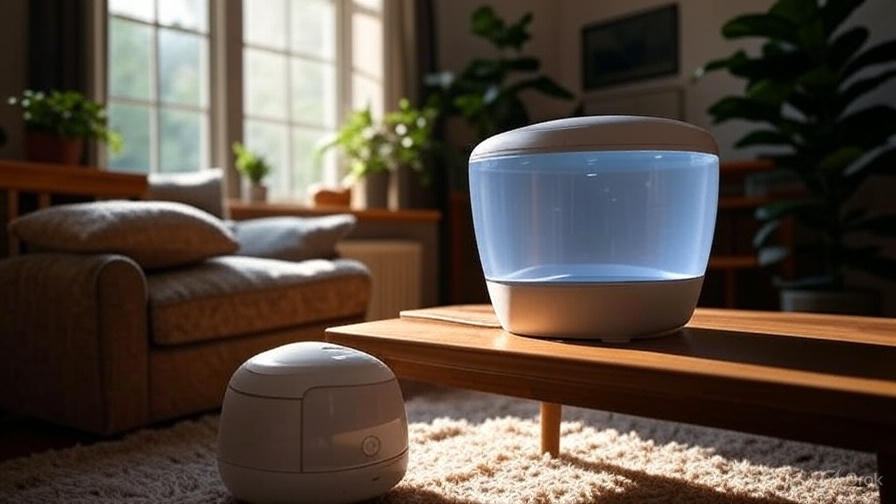
DIY Humidity Hacks That Actually Work
Creative solutions can boost humidity levels using common household items and simple techniques. These methods cost virtually nothing and can be implemented immediately to address dry air problems.
Wet Towel Method
Hang damp towels near heat sources to create instant evaporation that adds moisture to room air. This technique works especially well with radiators, heating vents, or sunny windows where warmth accelerates drying. Use clean towels and replace them regularly to prevent odors or bacterial growth.
Large bath towels hold more water and provide longer-lasting humidity benefits than smaller washcloths. Wring out excess water to prevent dripping while leaving enough moisture for effective evaporation. Monitor towels to ensure they dry completely between uses.
Hot Water Bowl Technique
Fill large bowls with hot water and place them strategically around rooms where humidity is needed. The combination of heat and surface area creates rapid evaporation that quickly increases local humidity levels. This method works particularly well during parties or gatherings when temporary humidity boosts are desired.
Add a few drops of essential oils to create pleasant scents while humidifying air. Eucalyptus, lavender, or peppermint oils provide aromatherapy benefits alongside moisture. Replace water daily and clean bowls regularly to maintain freshness.
Stovetop Simmering Solutions
Keep pots of water simmering on low heat to create continuous steam that humidifies entire kitchen areas. Add cinnamon sticks, citrus peels, or herbs to create natural air fresheners while increasing moisture levels. This method works especially well during winter months when heating systems create particularly dry conditions.
Monitor water levels carefully to prevent pots from boiling dry. Use back burners to avoid accidental contact and consider using slow cookers for safer, longer-term simmering. The gentle heat and continuous evaporation provide steady humidity increases without energy waste.
Maintaining Optimal Humidity Levels Year-Round
Seasonal changes affect indoor humidity significantly, requiring different strategies throughout the year. Winter heating systems create particularly dry conditions, while summer air conditioning can also reduce moisture levels substantially.
Winter Humidity Challenges
Cold outdoor air contains minimal moisture, and heating systems further dry this air as it warms. Indoor humidity can drop to uncomfortable levels below 20% during peak winter months. Combat these conditions with multiple humidity sources and careful moisture management.
Seal air leaks around windows and doors to prevent dry outdoor air from infiltrating your home. Weather stripping and caulking help maintain both temperature and humidity levels more effectively. Storm windows provide additional barriers against moisture loss.
Run humidifiers more frequently during winter months, but monitor levels carefully to prevent condensation on windows and walls. Excessive humidity can lead to ice formation on windows and potential mold growth in cold areas of your home.
Summer Humidity Balance
Air conditioning systems remove moisture along with heat, sometimes creating overly dry conditions even during humid summer months. Balance cooling needs with humidity requirements by using programmable thermostats and humidity controls.
Natural ventilation during mild summer evenings can help restore moisture levels without compromising cooling efficiency. Cross-ventilation patterns bring outdoor humidity indoors when conditions are favorable. Close windows and resume air conditioning when outdoor humidity becomes excessive.
Monitoring and Adjusting Humidity Levels
Digital hygrometers provide accurate humidity readings that help you maintain optimal levels consistently. Place these devices in different rooms to understand humidity variations throughout your home. Some models include memory functions that track humidity patterns over time.
Adjust humidification efforts based on seasonal conditions, weather patterns, and indoor activities. Cooking, showering, and having guests all affect humidity levels temporarily. Be prepared to increase or decrease humidification accordingly.
Watch for signs of excessive humidity like condensation on windows, musty odors, or visible mold growth. These indicators suggest you need to reduce moisture levels to prevent structural damage and health problems. Balance is key to maintaining comfortable, healthy indoor air quality.
Troubleshooting Common Humidity Problems
Even with proper humidification efforts, you might encounter challenges that require specific solutions. Identifying and addressing these issues quickly prevents discomfort and potential damage to your home.
White Dust from Humidifiers
Ultrasonic humidifiers sometimes produce white dust on furniture and surfaces around the unit. This residue comes from dissolved minerals in tap water that become airborne with water droplets. Switch to distilled water or install a demineralization cartridge to eliminate this problem.
Regular cleaning of humidifier tanks and components also reduces mineral buildup that contributes to white dust formation. Follow manufacturer cleaning recommendations and replace filters as directed to maintain optimal performance.
Uneven Humidity Distribution
Large homes or homes with complex layouts may experience uneven humidity distribution even with whole-house systems. Strategic placement of additional portable units can address problem areas where humidity remains low despite central humidification efforts.
Improve air circulation with ceiling fans or portable fans that help distribute humidified air more evenly throughout rooms. Open interior doors when possible to allow moisture to flow between spaces naturally.
Over-Humidification Issues
Excessive humidity creates its own set of problems including condensation, mold growth, and dust mite proliferation. If you notice these issues, reduce humidification immediately and improve ventilation to restore proper balance.
Use dehumidifiers in problem areas if natural ventilation isn’t sufficient to reduce moisture levels. Basements and bathrooms are particularly prone to over-humidification and may require dedicated moisture removal.
Creating comfortable indoor humidity doesn’t require expensive equipment or complex installations. Start with simple natural methods and add mechanical humidification as needed based on your home’s specific requirements. Monitor levels regularly and adjust your approach seasonally to maintain optimal comfort and air quality year-round.
The key to success lies in consistency and attention to detail. Small daily actions like leaving bathroom doors open after showers or adding houseplants to dry rooms can make significant differences in overall comfort. Combine these natural approaches with appropriate mechanical systems for comprehensive humidity control that keeps your home comfortable and healthy throughout every season.

